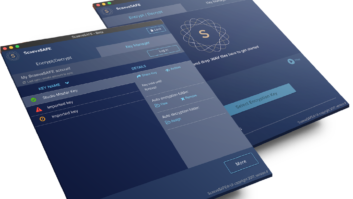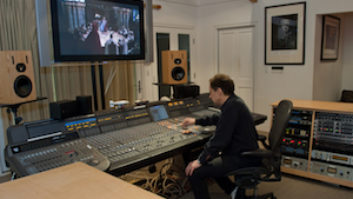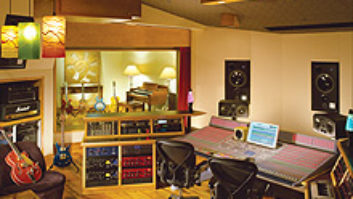When you think of likely bastions of cutting-edge audio technology, Redondo Beach, Calif., isn’t first on the list. But those old images of a sleepy beach town populated by unemployed surfers don’t hold water anymore. Location, location, location: Some 15 miles southwest of downtown L.A., today’s bustling Redondo is part of the upscale South Bay, next to hip Manhattan Beach, old money Palos Verdes and a busy high-tech business corridor. It’s also home to the Redondo Beach Performing Arts Center, a multipurpose venue currently undergoing a $9.5 million renovation, with approximately 10% of the budget earmarked for a very forward-thinking sound design.
Multipurpose is putting it lightly; while RBPAC’s main client is the highly successful Civic Light Opera of South Bay Cities, in any given year the venue plays host to pop, rock, and jazz concerts, church group programs, multi-ethnic cultural performances, modern dance and ballet, body-building championships and a Distinguished Speaker Series presenting the likes of Margaret Thatcher, Garrison Keillor and Madeleine Albright.
Jack Meyer, technical director, and Kevin Bleuer, head audio engineer, have been with the 1,457-seat facility since its transition, more than 10 years ago, from high school auditorium to public performance space. “It was in total disrepair back then,” recalls Meyer, “a stripped shell of concrete with worn out seats. Now we house the largest civic light opera in Southern California, with 18,000 subscribers and two back-to-back Ovation Awards for Best Musical (Large Theater).”
Four months out of the year the CLO presents full blown, Broadway-style productions such as Evita, A Funny Thing Happened on the Way to the Forum and West Side Story, and Meyer and Bleuer credit that company’s sound designer, John Feinstein, with much input into the new system design. The rest of the year, RBPAC is a rental house, making maximum flexibility paramount. “The goal was to enable everything,” continues Meyer. “Our clients are producers and concert promoters. What appeals to them is less time in the building and less equipment to rent, so we want to provide or facilitate as much production as possible. Most events don’t have time to re-evaluate the building and adjust for different kinds of functions. The ultimate goal here is a system where, with memorized settings, we’re able to flip a switch and have a complete configuration change.”
Brainstorming that goal led to a sound system, designed by Veneklasen Associates and installed by Thomas Gregor Associates, that uses fiber-optic lines, an Otari ND-20 audio distribution system, and a Yamaha PM1D digital console with BSS SoundWeb for digital distribution and processing to the QSC PowerLight amps driving Renkus-Heinz CT Series loudspeakers.
Previous RBPAC sound installations had been plagued by environmental issues, such as salt air corrosion and RF from the venue’s close proximity to business complexes, so fiber-optic cabling was an obvious component of the plan. “It’s much easier to pull, we don’t have hundreds of analog pairs going every which way, and it’s a lot easier for troubleshooting — either it works or it doesn’t,” comments Bleuer. “Fiber also eliminates the issues of shielding problems and ground hums, as well as the radio interference we have here with companies like TRW all around us. Of course, with fiber, the quality of the installation is key.”
Thomas Gregor Associates’ Christian Hugener, along with project manager Eric Motley, oversaw the fiber installation as part of the overall engineering and fabrication package. “We have our in-house people who are trained to terminate and test the fiber as a part of the network process,” he explains. “We have the proper test tools and procedures to ensure the fiber meets its bandwidth and loss requirements. It’s a very labor-intensive process; it’s not simply stripping a wire and crimping it or soldering it. When you strip back the fiber and fuse it or glue it into its socket, it needs to be polished. You need a ‘scope to see how clean it is; you are physically looking at a piece of glass. Then you need special tools that allow you to put signal through the fiber and test for bandwidth and dB loss. It’s also critical how you go from the fiber side to the copper side.”
Digital distribution from multiple networked locations was next on the wish list for RBPAC’s install, but it wasn’t until Bleuer hooked up with Otari representatives at an AES show in 2000 that a practical solution presented itself — the Otari ND-20 audio distribution system.
“We were trying to find a digital solution,” Bleuer explains. “It’s kind of a leap of faith, because it’s so new in live installations, but it’s the next logical step. We looked at CobraNet and other systems, but they were mostly being used in multiroom venues. The latencies in those systems were as much as 12 or 13 milliseconds, which — for our size house — would have resulted in unacceptable propagation delays. The more we researched, the less it sounded like digital distribution would work for us. We were heading back to wire when someone told me about Otari’s new product, which they’d used at the Sydney Olympics.”
Otari’s ND-20 is now at the heart of the install. Using Yamaha’s mLAN protocol (an extension of Apple’s IEEE1394/Firewire technology), it provides the capability for I/O locations fitted with remote mic preamps and AD/DA converters, as well as word clock distribution.
“Our basic gain structure is all set up through the Otari ND-20,” Bleuer notes, “using its CB178 remote, which is hot-pluggable from the mix position or from any of the other ND-20 rack locations. The CB178 can interrogate any box on the network, and can make adjustments such as trimming gain, inserting a pad or limiter, or activating phantom power assignments. It essentially controls all mic pre parameters remotely. Working this way, we find we’re actually doing very little in the way of gain structure in the board itself. For the most part, everything comes in from the ND-20’s D/As at line level with very low noise.”
Two 40-in/8-out ND-20 fixed setups are mounted on each side of RBPAC’s stage, with fiber-optic network connections also installed in the orchestra pit and at the rear of the stage for a portable ND-20 rack. Another ND-20 hookup is installed on the loading dock to facilitate remote recording and television trucks, and an optic port onstage allows for a digital monitor split as well. The fourth ND-20 hookup is at the main mix position in the rear control booth.
“Early on, I was pushing for the ND-20 because it seemed exactly what we were looking for,” Bleuer comments, “but this hasn’t been done before, and as we went along we discovered additional requirements. Otari has been great about thinking it through with us and accommodating our specific needs.
“We actually had code written at Otari Japan specifically for RBPAC’s installation,” recalls Dan Palmer, Director of Product Development and Marketing for Otari. “We made some specific requests to our R&D group there for fine-tuning the RBPAC system, and the engineers in Japan turned it around in one day. Rick Seegull [Otari Technical Operations Manager] and I hand-delivered and installed the firmware the next day. We knew that they were preparing for a show opening and we wanted to make sure that everything went perfectly.”
With the imminent installation of mLAN cards to the Yamaha PM1D desk, which runs dual, synchronized DSP engines in “mirror mode” for redundancy, signal will stay digital through the output of the console. Although RBPAC has a substantial outboard rack available, the staff finds that the PM1D has eliminated the need for most outboard equipment. “It’s a very popular board,” Bleuer asserts. “I think the fear factor for digital consoles in live applications is diminishing very rapidly. And that’s one of the real strengths of this system. Not only do we have the flexibility of configurations — from orchestra to rock band to TV truck — we also have the strength of digital and total recall of any past show you’ve done. For repeat clients, we can set up a template. That takes a little extra time to set up, but once it is, it’s very easy to come in, slap in a card or call up a file.”
Distribution from the desk to the QSC PowerLight amps and the Renkus-Heinz speaker system is driven through yet another digital network: BSS Audio’s SoundWeb.
“It may seem a bit like overkill to have three discrete digital systems,” admits Bleuer, “the front end, the controller and the back end, but we wanted to make it so you could use one of the systems, or any combination of them, without requiring that you use the other parts. If someone wants to use our distribution system, but with their own mixer, they can. They can use our speakers and output system but run their own snake.”
That ability to easily accommodate outside mixers and equipment was a major design element in the system. Almost any configuration of analog or digital is possible; for example, a show loading in can interface an analog console, or even bypass the fiber system by running standard copper cabling through a plastic “beverage” line to the stage. An alternate center FOH position equipped with data hookups is also available for those who choose not to use the dedicated back wall control booth.
Working with changing technology presents new challenges, and the term “bleeding edge” comes up when speaking with any of the contributors to RBPAC’s sound system. “Veneklasen’s contribution was substantial,” credits Bleuer. “Jack Shimizu, the system designer, was willing to work with us on the direction we wanted, even down to accommodating specific products and model numbers. Then he had the task of implementing the system, with all of it being fairly modular. For example, we brought them the idea of using the Otari system, and it was their job to make sure it was viable.”
“It’s probably one of the first digital distribution systems that is modular,” Shimizu, who has been involved in numerous large fiber-optic installations, states. “Although it’s been done by other companies, by the time you got on the digital bus and off of it, most of them have a latency of about 14ms. The Otari system processes the info a lot faster.
“This was all brand-new — all run in (the ND-20’s native) Firewire mode,” he continues. “Which is great because it’s hot-swappable. As soon as you plug an ND-20 box in, the system recognizes it’s there. With other systems out there, if you’ve unplugged, you must shut the system down, reconfigure and bring it back up.”
While RBPAC continues to be open during construction for regular clients such as the South Bay Civic Light Opera, the official post-renovation opening is scheduled for October 2002. It will be full steam ahead then. “Before we began planning for the renovation, we asked the powers that be what they wanted to do here,” says Meyer, “It was, ‘Do you want to do musical theater, concerts, lectures, dance?’ The answer to everything was ‘Yes,’ so that’s the production system we’ve designed — maximum flexibility for maximum marketability.”




